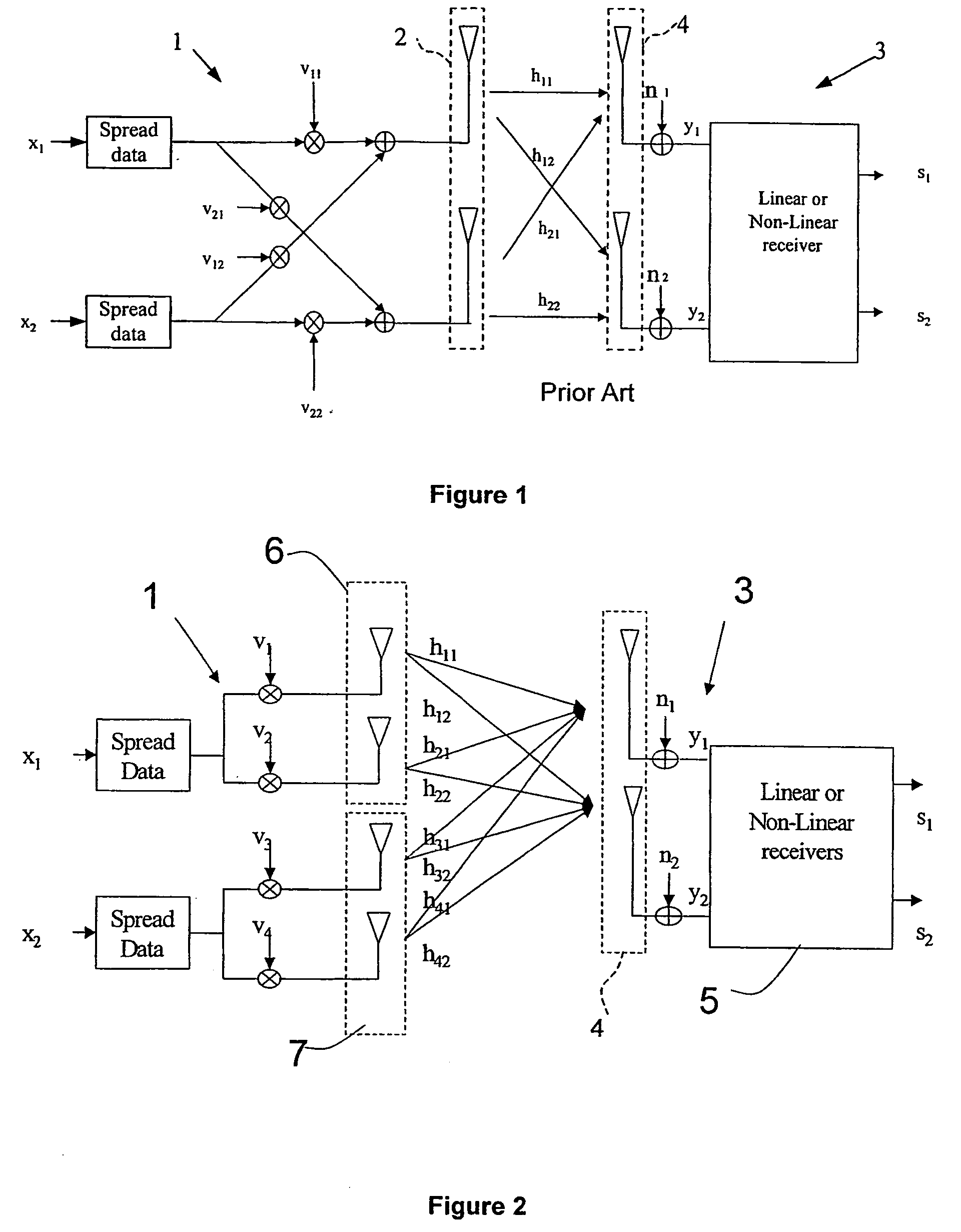Wireless communication using multi-transmit multi-receive antenna arrays
a multi-receiver, antenna array technology, applied in multiplex communication, electromagnetic wave modulation, baseband system details, etc., can solve the problems of complex receivers and limited range of operational snrs
- Summary
- Abstract
- Description
- Claims
- Application Information
AI Technical Summary
Benefits of technology
Problems solved by technology
Method used
Image
Examples
Embodiment Construction
[0017]FIG. 1 of the drawings shows a known multi-stream wireless communication system comprising a transmitter station 1 comprising a transmit antenna array 2 of N transmit antenna elements and a receiver station 3 comprising a receive antenna array 4 of M receive antenna elements. In the example illustrated in FIG. 1, N=M=2. A plurality of distinct data streams x1 to XF (F=two in the example of FIG. 1) are transmitted from the transmit antenna array 2 to the receive antenna array 4 and the data streams are weighted by respective complex weighting coefficients vn,f where n is the nth transmit antenna element and f is the fth data stream before being applied to the transmit antenna array. The distinct data streams are separated and estimated at the receiver station in a linear or non-linear receiver 5, to produce detected signals s1 and s2.
[0018] In the case shown in FIG. 1, with N=M=F=2, the propagation channel can be represented by a matrix H_=[h_11h_12h_21h_22].
In the closed-lo...
PUM
 Login to View More
Login to View More Abstract
Description
Claims
Application Information
 Login to View More
Login to View More - R&D
- Intellectual Property
- Life Sciences
- Materials
- Tech Scout
- Unparalleled Data Quality
- Higher Quality Content
- 60% Fewer Hallucinations
Browse by: Latest US Patents, China's latest patents, Technical Efficacy Thesaurus, Application Domain, Technology Topic, Popular Technical Reports.
© 2025 PatSnap. All rights reserved.Legal|Privacy policy|Modern Slavery Act Transparency Statement|Sitemap|About US| Contact US: help@patsnap.com



